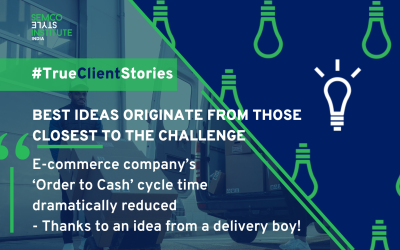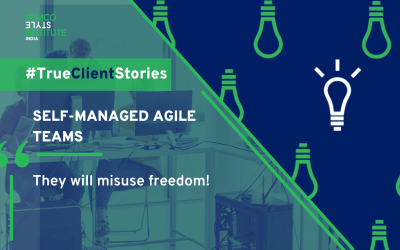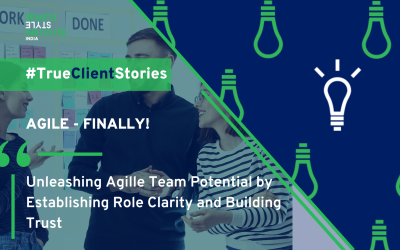
A renowned social entrepreneur had built a multimillion-dollar business by engaging artisans in rural India and thereby giving them a livelihood. While they were growing and going global, they were facing problems with delayed delivery of the end product, hurting them significantly in terms of money and goodwill. Semcostyle Institute India was engaged to demonstrate how a self-managed and empowered team can solve problems that seem complex from the outside.
Most of the work was done in the villages and by artisans who spoke native languages and had limited or no formal education. On the other hand, the “office”, where most decisions were made, was full of people with access to technology, resources, and data. Unsurprisingly, every time the challenge of OTD came up, both sides would say – what do they know? The lack of alignment between headquarters and field teams was stark.
As one of several interventions to enhance alignment, we got representatives from all functions to come together and visualize the value chain and what role each of them plays in that. We empowered field teams in the villages to determine what data they needed, how it should be delivered, by whom, and when. We started with an improvised form of a simple ritual – “daily standup” with a small cross-functional team. Over four weeks, the team designed easily readable reports that everyone could understand. Armed with the information that they could relate to, the team began making critical decisions like when to set up and offload the looms, dispatch completed products, and arrange logistics for shortages in raw materials – focusing on improving OTD. Within six weeks, with no additional investment or manager involvement the OTD improved from 40% to 70% for the pilot teams.
The team weaved the magic with five simple practices – #InformationBelongsToEveryone, #LetsLearnTheNumbers, #BoundariesOfAction, #RhythmOfGovernance and #PurposeAlignment Incidentally, these are the foundation of building self-managed teams.
#ShapingTheFutureOfWork #DrivingBusinessResults #HumanCentric
To learn more about how we help organisations become self-managed, resilient and thus future-ready, click here.
Related Posts
Best Ideas Originate From Those Closest To The Challenge
This E-commerce company’s ‘Order to Cash’ cycle time dramatically reduced – Thanks to an idea from a delivery boy! Innovation happens closest to the problem.
Self-Managed Agile Teams
Transparent, inclusive Agile teams collaboratively crafted policies and autonomously adapted them, showcasing self-management and self-governance.
Agile – Finally!!
This organization saw tangible outcomes with Agile implementation once it embraced a culture centered around agility



